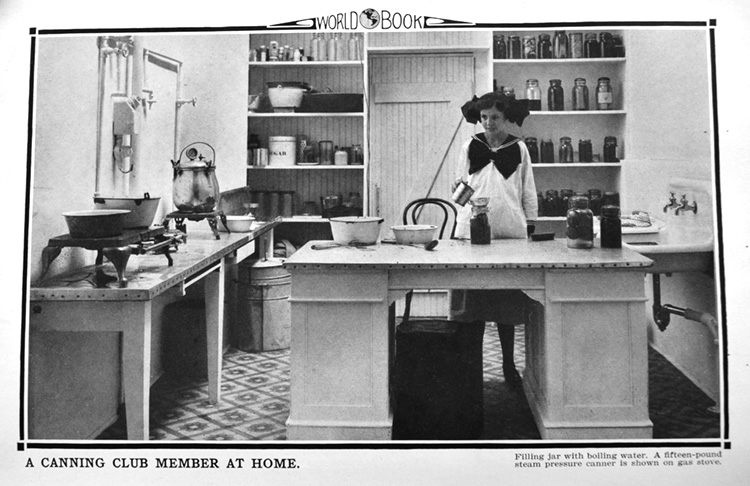When we take a can of soup off a store shelf, we don’t usually think about the temperature the soup needed to reach as it was canned to be sure it was safe to eat. In our 21st-century world, most of us think of food preservation as something done in a factory, using machines attended by workers in white coats.
However, in the world of 1917—the year the first edition of The World Book Encyclopedia was published —home canning in glass jars was a popular way to feed a family during the winter, when fresh foods were not available. Some industrial methods of food preservation were known back then. But, according to the World Book article “Food products, preservation of,” people canned an estimated 150 million quarts of food in their homes in 1916. In those days, it wasn’t easy to transport fresh foods to the general public: “The areas of production ... are frequently far distant from the center of population, and the distribution of foodstuffs, especially of perishable products, such as fruits and vegetables, is a serious problem.”

In World Book’s 2017 edition, the entire “Food preservation” article is about industrial methods of preserving food. An assembly line of open cans, filled with a soup-like product, moves on a conveyer belt past an observing worker. Heating, canning, cold storage, and drying are among the techniques described to keep foods fresh and safe for consumption. The article focuses on large-scale, industrial operations that use such tools as air-blast freezers and chemical additives.
The World Book article of a century ago provides step-by-step instructions for preserving a variety of foods. Home canners would have read that making strawberry preserves requires heating the fruit to 219 °F (114 °C). To make soup, the cook was instructed to “Secure twenty-five pounds of beef hocks, joints and bones containing marrow” and then to “crack bones with a hatchet or cleaver.”
Today, our industrially preserved food is generally safer, and certainly less labor-intensive for the average family to acquire. However, there is nothing quite like opening a glass jar of your own strawberry preserves, hearing that “pop” that indicates it was well and safely sealed, and tasting the fruit you grew last summer. Thousands of families who purchased a set of World Book in 1917 were able to get through the winter doing just that.
